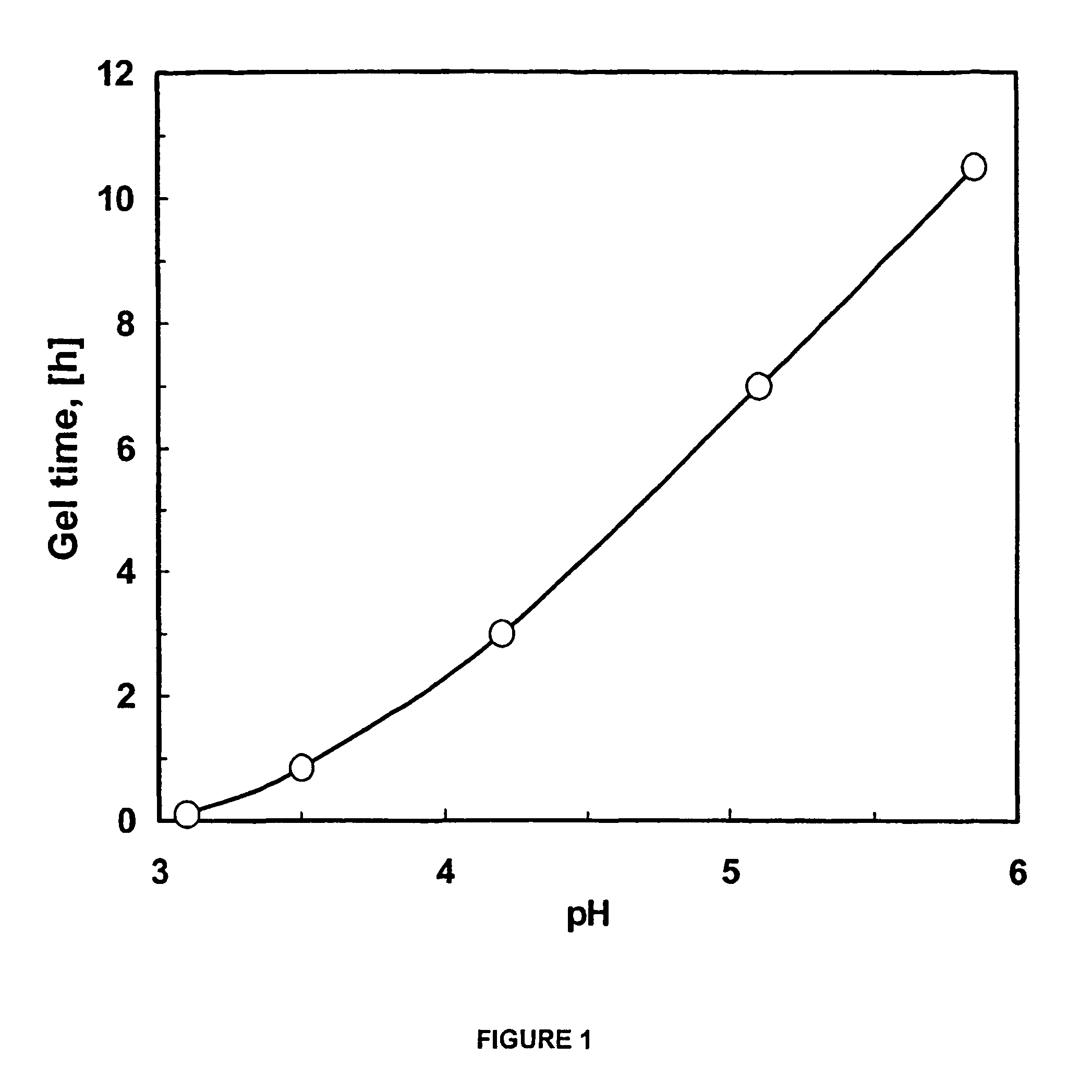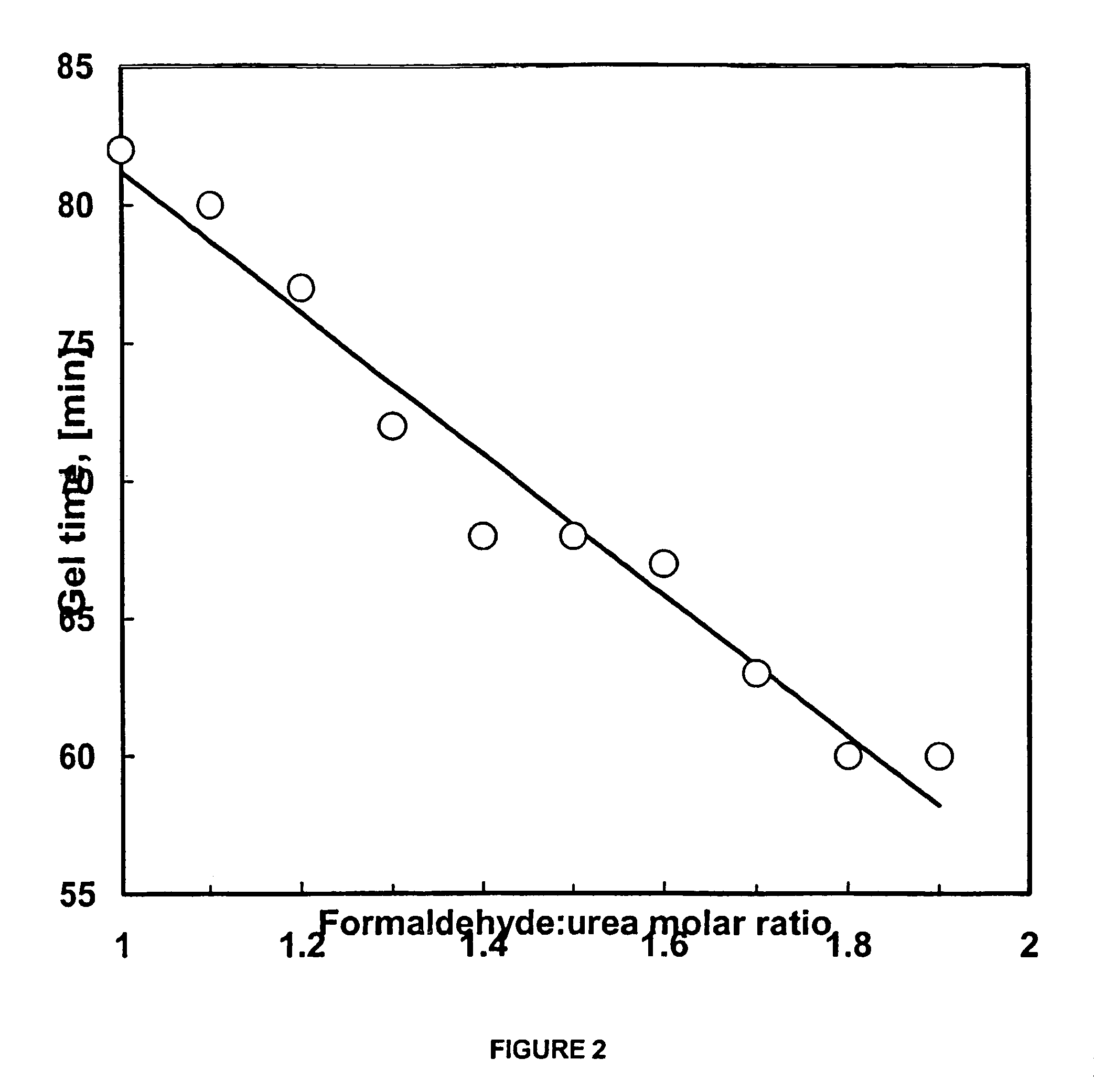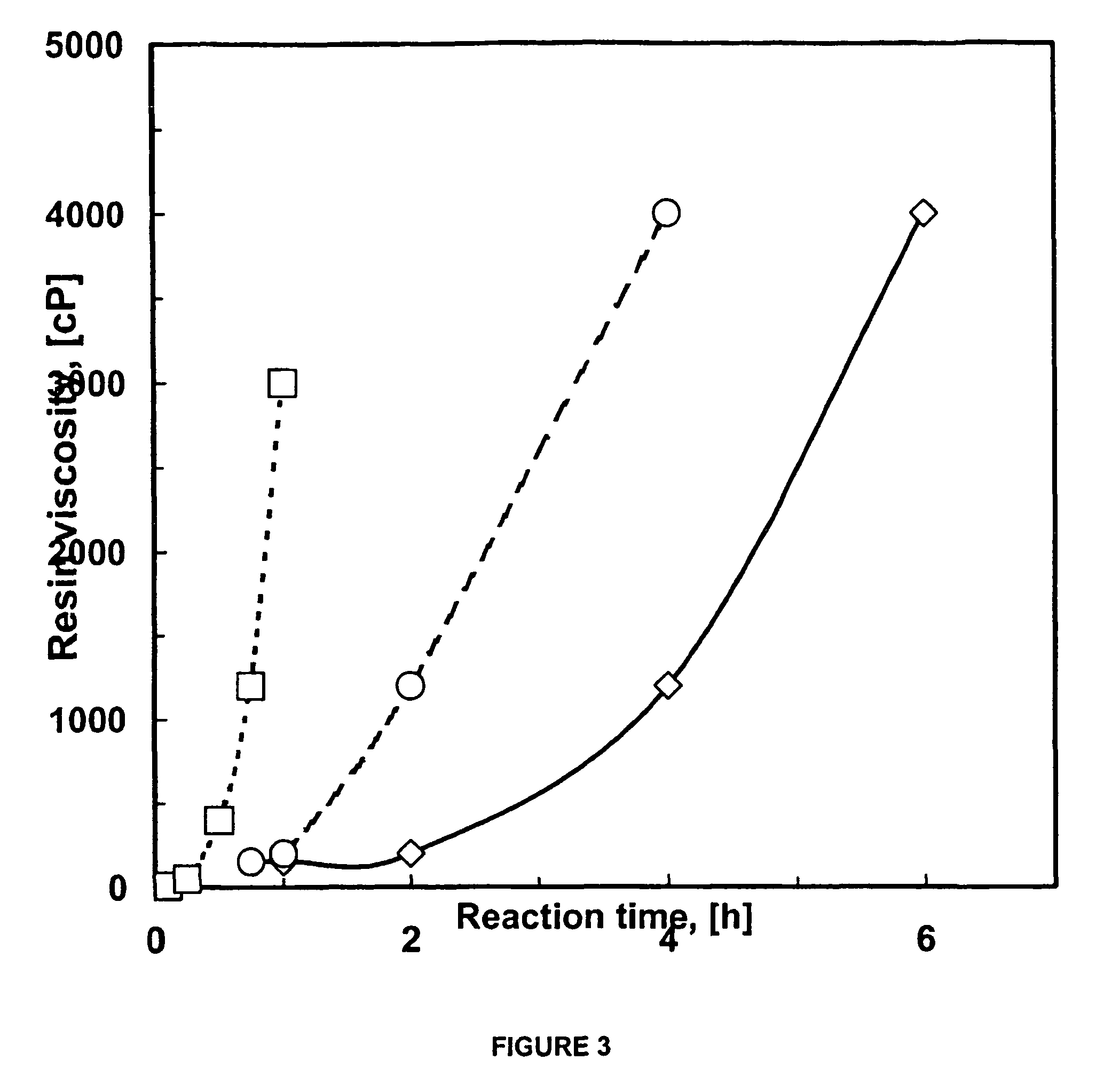Binder composition and method for treating particulate material
a technology of bounder composition and particulate material, which is applied in the field of bounder composition and method for treating particulate material, can solve the problems of difficult to treat large areas such as roads, limited penetration of solution into the road surface, and unsuitable mixing with bulk soil, so as to improve user and ecological friendliness, less formaldehyde fumes, and more predictable evenly crosslinked polymers
- Summary
- Abstract
- Description
- Claims
- Application Information
AI Technical Summary
Benefits of technology
Problems solved by technology
Method used
Image
Examples
example 1
[0111]To provide a solid aggregate matrix according to the invention by preparing a binder composition and mixing the binder composition with a body of particulate material:[0112]1. Take 1 kg of particulate material in the form of soil, preferably evenly graded with small to larger particles;[0113]2. Establish the moisture content whereby this soil compacts optimally e.g. 5% water added (weight / weight) and place water (50 g for example) in a mixing vessel;[0114]3. Add 7 g of urea granules to the water and stir for 15 minutes or until dissolved;[0115]4. Add 15 g of bitumen emulsion (anionic);[0116]5. Add 22 g of UFC;[0117]6. Add 1 g of citric acid previously treated with sugars—dissolved into it (say 30% concentrate);[0118]7. Add 1 g humic acid (reduce or increase acid if pH is less than 3 or more than 5);[0119]8. Add the other additives as required e.g. 0.006 g silanes (or 0.02% of the weight of the solution);[0120]9. Mix thoroughly with the soil by agitation or permeation;[0121]10....
example 2
[0125]1. Follow steps 1 to 8 above;[0126]2. Add relatively more water to ensure deeper penetration of the binder composition;[0127]3. Spray the liquid onto the surface of the soil;[0128]4. Spray the mixture of step 10 above onto the soil (only permeate or mix in);[0129]5. Let dry until closer to optimum moisture content;[0130]6. Compact (less compaction than in example 1); and[0131]7. Allow to set without curing with water to form a solid aggregate matrix.
[0132]An effective solid aggregate matrix can thus be obtained by using the method described above and by optimally adjusting the following factors:[0133]Using the best soil or particulate material available economically at a particular location, or importing and mixing other soil or particulate materials into this particulate material to obtain a more continuous grading of particles or other properties desired or available;[0134]Batching and mixing the chemicals in optimal ratios;[0135]Mixing these chemicals with the correct amoun...
example 3
[0142]A 100 kg mixture of the binder composition and particulate material (soil) was prepared by mixing the following ingredients together:
[0143]
urea-stabilised formaldehyde (UFC)2000gbitumen emulsion1000gphenol250gurea379gcitric acid80gwater3000gsoil93 291g
[0144]The urea-stabilised formaldehyde solution (UFC) used was Inkunite UFC (registered trade mark) obtained from Resinkem (Pty) Limited, Umbogintwini, South Africa, 4120. The lnkunite had a formaldehyde content of between 51 and 58% by mass, a urea content of between 22 and 28% by mass and a pH of between 6.5 and 8. The bitumen emulsion had a bitumen concentration of about 60%. The soil included fine sand and had a moisture content of about 5%.
[0145]The mixture of the abovementioned ingredients was formed into the shape of bricks, compacted, and left to dry, set and harden at room temperature to form a solid aggregate matrix.
PUM
| Property | Measurement | Unit |
|---|---|---|
| temperature | aaaaa | aaaaa |
| molar ratio | aaaaa | aaaaa |
| temperature | aaaaa | aaaaa |
Abstract
Description
Claims
Application Information
 Login to View More
Login to View More - R&D
- Intellectual Property
- Life Sciences
- Materials
- Tech Scout
- Unparalleled Data Quality
- Higher Quality Content
- 60% Fewer Hallucinations
Browse by: Latest US Patents, China's latest patents, Technical Efficacy Thesaurus, Application Domain, Technology Topic, Popular Technical Reports.
© 2025 PatSnap. All rights reserved.Legal|Privacy policy|Modern Slavery Act Transparency Statement|Sitemap|About US| Contact US: help@patsnap.com



